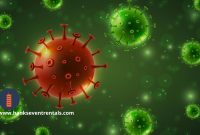Sewage water treatment is an essential defense mechanism in the global fight against water pollution. Every day, cities, industries, and households generate massive amounts of wastewater that, if left untreated, can harm ecosystems, pollute rivers, and contaminate drinking water sources. The treatment process turns this harmful waste into treated water that can safely re-enter the environment. This transformation is crucial in preserving the health of our water bodies and reducing the pollutants that contribute to water pollution.
What Is Water Pollution and How Does It Happen?
Water pollution occurs when harmful substances such as chemicals, pathogens, waste products, and debris enter water bodies like lakes, rivers, oceans, and groundwater, making the water toxic for humans, animals, and plants. The main contributors to water pollution include untreated sewage, agricultural runoff, industrial discharges, and urban waste.
The role of sewage in water pollution is particularly significant. Untreated sewage carries not only organic waste but also harmful bacteria, pathogens, chemicals, and heavy metals that can severely degrade the quality of water bodies. If this sewage is not properly treated, it pollutes rivers and oceans, harms aquatic life, and even jeopardizes human health when contaminated water is used for drinking or irrigation.
How Sewage Water Treatment Reduces Water Pollution
The primary goal of sewage water treatment is to remove contaminants from wastewater so that it can be safely returned to the environment. The treatment process breaks down harmful substances, significantly reducing pollution levels. Here’s how sewage water treatment helps combat water pollution:
1. Removal of Organic Waste
Sewage contains high levels of organic matter, including food scraps, fecal matter, and other biodegradable materials. These substances deplete oxygen in water bodies, causing oxygen-demanding bacteria to thrive and killing fish and other aquatic life due to oxygen scarcity.
In sewage treatment plants, biological processes, such as the use of aerobic bacteria, break down organic matter. The bacteria consume organic waste, transforming it into harmless by-products like water and carbon dioxide, thus preventing oxygen depletion in natural water sources.
2. Elimination of Pathogens
Sewage contains harmful microorganisms, including bacteria, viruses, and parasites, that can cause diseases such as cholera, typhoid, and hepatitis if they enter drinking water supplies. In the water treatment process, pathogens are neutralized through a combination of physical and chemical methods.
Chlorination, ultraviolet (UV) disinfection, and ozonation are commonly used to kill or deactivate these pathogens, making the treated water safe for discharge into natural bodies of water without spreading disease.
3. Reduction of Harmful Nutrients
Nutrients such as nitrogen and phosphorus, commonly found in sewage, are major contributors to water pollution, leading to a phenomenon known as eutrophication. This process results in excessive growth of algae in water bodies, which blocks sunlight, depletes oxygen, and ultimately kills aquatic life.
During the sewage treatment process, nitrification and denitrification steps help remove excess nitrogen, while chemical precipitation or biological processes can remove phosphorus. These reductions prevent nutrient overload in natural waters, helping maintain balanced ecosystems.
4. Removal of Toxic Chemicals and Heavy Metals
In addition to organic waste and pathogens, sewage may contain toxic chemicals, including pesticides, pharmaceuticals, and industrial by-products, as well as heavy metals like lead, mercury, and arsenic. These pollutants can accumulate in the food chain and pose serious health risks to both humans and wildlife.
Advanced sewage water treatment processes, such as activated carbon filtration, reverse osmosis, and chemical treatments, are employed to remove these hazardous substances, ensuring that treated water released into the environment is free from dangerous toxins and metals.
5. Reduction of Solid Waste
Sewage contains solid waste, including plastics, non-biodegradable materials, and sludge, that can clog waterways, harm aquatic species, and contribute to marine pollution. Through processes like screening, sedimentation, and sludge digestion, sewage treatment plants capture and remove solid waste from wastewater.
Proper disposal or recycling of the captured solid waste further helps in reducing environmental pollution and preventing the harmful impact of marine debris on ocean ecosystems.
Stages of Sewage Water Treatment
To understand how sewage water treatment effectively combats water pollution, it’s essential to explore the stages involved in the treatment process. Each stage addresses specific pollutants and ensures that the water leaving the treatment plant is safe for the environment.
1. Preliminary Treatment
Preliminary treatment is the first step in the sewage water treatment process. It involves the physical removal of large debris such as sticks, plastics, and grit. This stage helps prevent damage to the machinery used in subsequent stages and ensures that smaller pollutants can be more easily treated.
Screening and grit removal systems are employed during this stage to filter out coarse materials, allowing the water to move smoothly through the treatment plant.
2. Primary Treatment
The primary treatment stage focuses on the removal of suspended solids from the wastewater. In this step, sewage flows into large sedimentation tanks where solids settle at the bottom as sludge, while lighter substances such as oil and grease rise to the surface and are skimmed off.
Primary treatment significantly reduces the amount of solid waste in the sewage, but dissolved organic matter and nutrients remain, requiring further treatment.
3. Secondary Treatment
Secondary treatment employs biological processes to break down dissolved organic matter and remove nutrients. In this stage, aerobic bacteria are introduced to consume organic pollutants in the wastewater.
Aeration tanks provide oxygen, which allows these bacteria to thrive and digest the remaining waste. The wastewater then flows into secondary sedimentation tanks, where bacteria and other particulates settle out as sludge.
4. Tertiary Treatment
Tertiary treatment is the final step before the treated water is discharged. This advanced treatment process targets remaining pollutants such as nutrients, heavy metals, and pathogens.
- Nutrient Removal: Processes such as nitrification, denitrification, and phosphorus removal help eliminate excess nutrients that contribute to eutrophication.
- Disinfection: Chlorination, UV light, and ozone are used to destroy any remaining pathogens in the water.
- Filtration: Some plants may use filtration techniques like sand filtration or membrane technologies to remove remaining solids and suspended particles.
Tertiary treatment ensures that the water leaving the plant meets environmental standards and can safely return to rivers, lakes, or be reused for agricultural and industrial purposes.
The Global Impact of Sewage Water Treatment on Water Pollution
Around the world, sewage water treatment plays a vital role in reducing water pollution. Without effective treatment, many water bodies would become severely polluted, causing widespread environmental and health issues. Countries with advanced sewage treatment infrastructure, such as Germany, Japan, and the United States, have made significant strides in maintaining cleaner rivers, lakes, and oceans.
However, in many developing countries, untreated sewage remains a leading cause of water pollution. Inadequate sewage treatment infrastructure leads to the contamination of vital water sources, contributing to waterborne diseases and ecosystem destruction. Expanding sewage treatment capacity globally is essential in the ongoing battle against water pollution.
The Benefits of Sewage Water Treatment
The benefits of sewage water treatment in combating water pollution are immense. Here are some key advantages:
- Clean Water Bodies: Treatment prevents the contamination of rivers, lakes, and oceans, keeping water safe for aquatic life and human consumption.
- Improved Public Health: By removing pathogens and harmful chemicals, sewage treatment prevents the spread of waterborne diseases.
- Sustainability: Proper sewage treatment helps in water reuse, reducing the strain on freshwater resources.
- Biodiversity Protection: Treated water supports healthy ecosystems, allowing aquatic species to thrive in a balanced environment.
- Renewable Energy Production: Anaerobic processes in sewage treatment produce biogas, which can be used as a clean energy source.
Challenges in Sewage Water Treatment
Despite its numerous benefits, sewage water treatment faces several challenges:
- Infrastructure Costs: Building and maintaining sewage treatment plants requires significant investment, which can be difficult for developing nations.
- Chemical Pollution: Some pollutants, like microplastics and certain pharmaceuticals, are harder to remove from wastewater, requiring advanced treatment technologies.
- Population Growth: Rapid urbanization and population growth lead to increased sewage production, putting pressure on existing treatment facilities.
Addressing these challenges requires global cooperation, technological innovation, and sustainable practices to ensure that sewage water treatment continues to be a key solution in combating water pollution.
FAQs: How Sewage Water Treatment Helps Combat Water Pollution
Q1: Why is sewage water treatment important in preventing water pollution?
Sewage water treatment is crucial because it removes harmful pollutants, including organic waste, chemicals, and pathogens, from wastewater before it is released into the environment. This prevents contamination of natural water bodies and protects aquatic life and human health.
Q2: What pollutants does sewage water treatment remove?
Sewage water treatment removes a variety of pollutants, including organic matter, pathogens, nutrients (nitrogen and phosphorus), toxic chemicals, and heavy metals, preventing them from entering rivers, lakes, and oceans.
Q3: How does sewage water treatment reduce eutrophication?
Sewage water treatment reduces eutrophication by removing excess nutrients, such as nitrogen and phosphorus, from wastewater. These nutrients, if left untreated, can lead to excessive algae growth, which depletes oxygen in water bodies and harms aquatic life.
Q4: What are the main stages of sewage water treatment?
The main stages of sewage water treatment include preliminary treatment (removal of large debris), primary treatment (sedimentation of solids), secondary treatment (biological treatment using bacteria), and tertiary treatment (advanced removal of nutrients, pathogens)
Read more also: Unveiling the Power of Bacteria in Sewage Water Treatment



